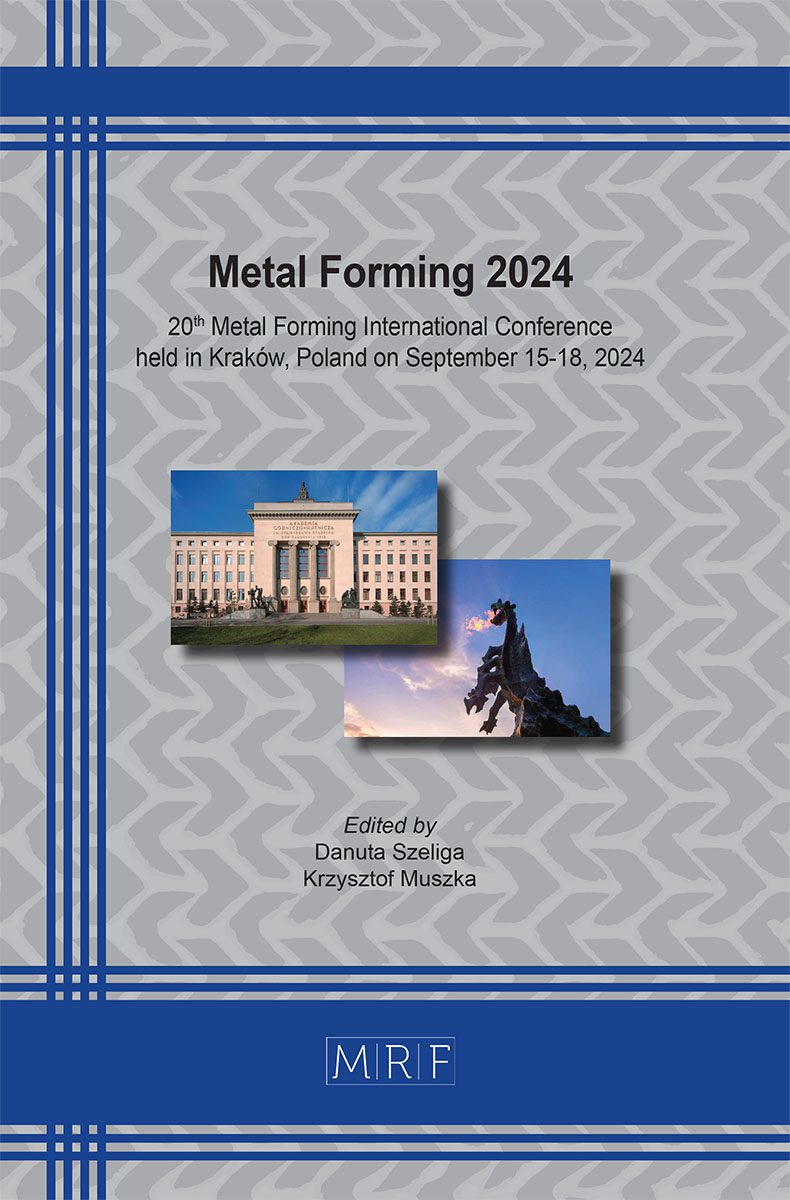–
Effect of ribs on torque in bending of rebars
HIGAKI Satoshi, NAITO Haruto, GO Tomoki, SASADA Masahiro, TANAKA Tatsuya
download PDFAbstract. Deformed steel bars (Rebar) are bent into various shapes as construction materials and used with concrete. Bending machines are used for processing, and torque is required to bend rebars. Understanding the torque required for rebars with variable cross-sectional shape is crucial. The purpose of this study is to clarify the relationship between torque and material deformation. Rebars and round steel bars were bent using a simple bending machine. A high-speed camera was used to observe the material deformation during the bending process. Elastic-plastic finite element analysis was also conducted to evaluate the relationship between the material deformation and torque of the rebars during bending. The following conclusions were obtained. When the circular roller contacts the round steel bar and starts bending the bar, the torque increases rapidly. Subsequently, the torque does not change easily and remains constant. On the other hand, the torque of the rebar also increases rapidly when the circular roller comes into contact. Thereafter, the torque repeats increasing and decreasing. It was confirmed that the torque required to bend a rebar exceeds that required to bend a round steel bar with an outside diameter similar to the minimum outside diameter of the rebar. The fluctuation in torque during rebar bending occurs due to the bending of the smaller outside diameter section of the rebar, which is further away from the fulcrum roller toward the circular roller. This contrasts with the bending process of round steel bars, where bending primarily occurs in the area in contact with the fulcrum roller. As the bending of a rebar progress, part of the rebar may move away from the fulcrum roller. When a section located on the rebar receiver side from the fulcrum roller moves away from the fulcrum roller, the torque required to progress the rotation angle of the circular roller was reduced. The torque required for bending rebars is found to be between the torque required for bending round steel bars of the smallest and largest diameters of rebars.
Keywords
Bending, Rebar, Torque, Finite Element Method, Deformation
Published online 9/15/2024, 12 pages
Copyright © 2024 by the author(s)
Published under license by Materials Research Forum LLC., Millersville PA, USA
Citation: HIGAKI Satoshi, NAITO Haruto, GO Tomoki, SASADA Masahiro, TANAKA Tatsuya, Effect of ribs on torque in bending of rebars, Materials Research Proceedings, Vol. 44, pp 11-22, 2024
DOI: https://doi.org/10.21741/9781644903254-2
The article was published as article 2 of the book Metal Forming 2024
![]() Content from this work may be used under the terms of the Creative Commons Attribution 3.0 license. Any further distribution of this work must maintain attribution to the author(s) and the title of the work, journal citation and DOI.
Content from this work may be used under the terms of the Creative Commons Attribution 3.0 license. Any further distribution of this work must maintain attribution to the author(s) and the title of the work, journal citation and DOI.
References
[1] S. Higaki, T. Go, K. Mizuno, M. Sasada, T. Tanaka, Effect of Diameter of Fulcrum Rolleron Shape of Rebar in Bending, Proceedings of the 14th International Conference on the Technology of Plasticity – Current Trends in the Technology of Plasticity ICTP 2023, Volume 4, 404-413.
[2] S. Higaki, H. Nishida, Y. Koike, M. Sasada, T. Tanaka, Effect of transfer ribs on longitudinal displacement of rebars in bending, Procedia Manuf. 50 (2020) 253-256. https://doi.org/10.1016/j.promfg.2020.08.047
[3] K. Takahashi, T. Watanabe, T. Kuboki, M. Murata, K. Ono, K. Yano, Reduction in Flatness Using Axial Compressive Force in Rotary Draw Bending of Circular Tube, J. Japan Soc. Tech. Plast. 49 (2008) 896-900. https://doi.org/10.9773/sosei.49.896
[4] T. Murota, J. Endow, Experimental Analysis on Plastic Deformation of Tubes in Uniform Bending, J. Japan Soc. Tech. Plast. 23 (1982) 343-349.
[5] T. Nishihara, S. Taira, On the Yielding of Steel under Bending Moment (Report 2), Trans. Japan Soc. Mech. Eng. 18 (1952) 90-94.
[6] T. Miura, K. Funamoto, K. Seto, Impact Resistance Ability in Bended Point of Reinforcing Bars at Very Low Temperature, Proceedings of JSCE 557 (1997) 15-22.
[7] H. Okimoto, K. Turuoka, Investigation of the fracture properties of deformed bars by the bend-and-return process, J. Struct. Constr. Eng. AIJ 442 (1992) 33-41.
[8] K. Sasaki, Y. Hisari, H. Igarashi, T. Miyagawa, Analysis of the strain and stress on bent section of reinforcing bar by finite element method, Proceedings of the Japan Concrete Institute 30 (2008) 987-992.












